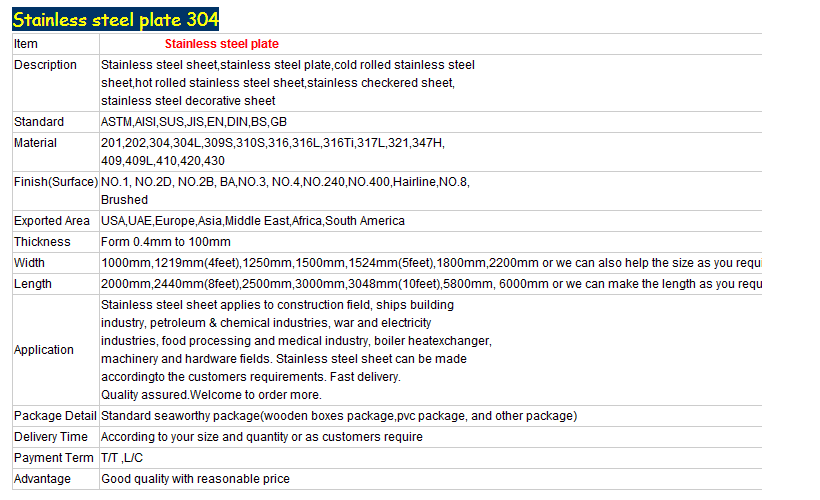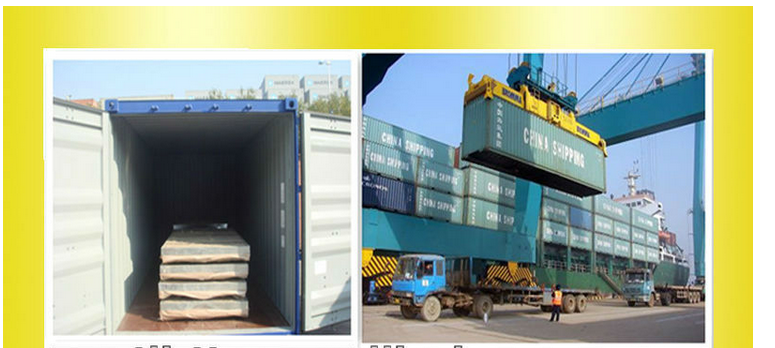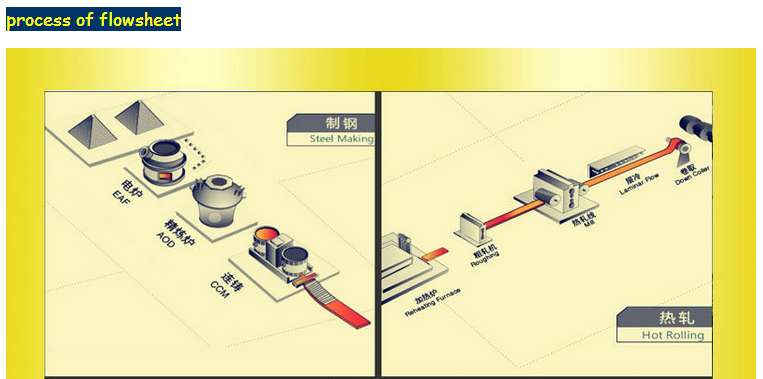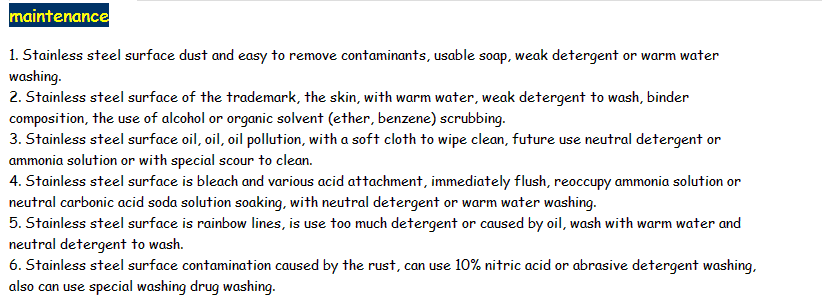316 Made in china Tisco 304 stainless steel plate
- Loading Port:
- Tianjin
- Payment Terms:
- TT OR LC
- Min Order Qty:
- 100 kg
- Supply Capability:
- 1000 kg/month
OKorder Service Pledge
Quality Product, Order Online Tracking, Timely Delivery
OKorder Financial Service
Credit Rating, Credit Services, Credit Purchasing
You Might Also Like






- Q:What are the different types of stainless steel pipe couplings?
- There are several types of stainless steel pipe couplings, including threaded couplings, slip-on couplings, socket weld couplings, and butt weld couplings.
- Q:How about stainless steel 2520 and 316?
- 316 stainless steel by adding Mo element, the corrosion resistance, and high temperature strength has greatly improved, high temperature can reach 1200-1300 degrees, can be used in severe conditions. Uses: marine equipment, chemicals, dyes, paper, oxalic acid, fertilizer and other production equipment; photography, food industry, coastal facilities, ropes, CD poles, bolts, nuts.
- Q:Can stainless steel pipes be insulated with neoprene?
- Yes, stainless steel pipes can be insulated with neoprene. Neoprene is a commonly used material for pipe insulation due to its excellent thermal properties and resistance to moisture. It provides effective insulation and protects against heat loss or condensation on stainless steel pipes.
- Q:How do you prevent condensation in stainless steel pipes?
- To prevent condensation in stainless steel pipes, there are several measures you can take: 1. Insulation: Apply insulation materials, such as foam or fiberglass, around the pipes. This will help maintain the temperature inside the pipe, preventing the outer surface from becoming cold and reducing the likelihood of condensation. 2. Vapor barriers: Install vapor barriers around the pipes to prevent moisture from reaching the pipe surface and causing condensation. These barriers can be made of materials like plastic or aluminum foil and should be properly sealed to ensure their effectiveness. 3. Increase pipe temperature: If possible, increase the temperature of the fluid or gas flowing through the pipes. This can be achieved by adjusting the temperature of the heat source or utilizing heat tracing systems that provide a constant heat supply to the pipe. 4. Proper ventilation: Ensure there is adequate airflow around the pipes, especially in areas where condensation is more likely to occur. This helps to dissipate any moisture that may accumulate and reduce the chances of condensation. 5. Reduce humidity: In areas with high humidity, consider implementing dehumidification methods, such as using dehumidifiers or installing moisture-absorbing materials, to lower the overall moisture content in the air. This can help minimize the potential for condensation. By implementing these preventive measures, you can significantly reduce the risk of condensation in stainless steel pipes, thereby protecting them from potential corrosion and maintaining their overall performance and longevity.
- Q:Is galvanized steel pipe stainless steel pipe?
- Not galvanized pipe, but the surface of the welded pipe galvanized zinc rust protection. The stainless steel pipe is welded by stainless steel band, or made of stainless steel bar punched (seamless pipe). And the two prices are very different
- Q:Can stainless steel pipes be annealed?
- Yes, stainless steel pipes can be annealed. Annealing is a heat treatment process that can improve the ductility, toughness, and machinability of stainless steel pipes by reducing internal stresses and increasing their overall strength.
- Q:Why can stainless steel pipes be welded by argon arc welding?
- Argon protection can isolate the harmful effects of oxygen, nitrogen and hydrogen on the arc and molten pool in the air, and reduce the burning loss of alloy elements, so as to obtain compact, no spatter and high quality welded joints;
- Q:What is the difference between 304H and 304L stainless steel pipes?
- The main difference between 304H and 304L stainless steel pipes lies in their carbon content. 304H has a higher carbon content, which gives it improved high temperature strength and resistance to sensitization. On the other hand, 304L has a lower carbon content, making it more resistant to corrosion in certain environments.
- Q:How do you prevent oxidation in stainless steel pipes?
- Preventing oxidation in stainless steel pipes can be achieved through several methods. One way to effectively prevent oxidation is by applying a protective coating or finish on the surface of the pipes. Various types of coatings, including paints, epoxy, or polyurethane, can serve as barriers that prevent oxygen from coming into contact with the stainless steel, thus reducing the risk of oxidation. Furthermore, keeping the pipes clean and well-maintained is crucial in preventing oxidation. It is essential to eliminate any accumulated dirt, debris, or corrosive substances from the surface of the pipes. This can be accomplished using mild detergents or specialized cleaning agents specifically designed for stainless steel. Ensuring proper ventilation in the installation area is another preventive measure. Sufficient ventilation helps minimize the presence of moisture or humidity, which can accelerate the oxidation process. Additionally, keeping the pipes dry and avoiding prolonged exposure to water or moisture is vital in preventing oxidation. Lastly, selecting the appropriate grade of stainless steel for the intended application is important. Different grades of stainless steel offer varying levels of resistance to oxidation. For instance, austenitic stainless steel grades like 304 and 316 are highly resistant to oxidation and are commonly used in applications where corrosion resistance is crucial. In conclusion, employing a combination of preventive measures, such as protective coatings, regular cleaning, proper ventilation, and selecting the appropriate stainless steel grade, can effectively prevent oxidation in stainless steel pipes.
- Q:Can stainless steel pipes be used for sewage pumping stations?
- Indeed, sewage pumping stations can utilize stainless steel pipes. Renowned for their resistance to corrosion, stainless steel proves to be an optimal material for sewage and wastewater applications. These pipes exhibit durability and strength, enabling them to endure the challenging circumstances and corrosive components present within sewage systems. Moreover, stainless steel exemplifies hygienic qualities and simplicity in cleaning, vital aspects for upholding the sanitation and effectiveness of a sewage pumping station. Consequently, stainless steel pipes establish themselves as a dependable and enduring selection for sewage pumping stations.
1. Manufacturer Overview |
|
|---|---|
| Location | |
| Year Established | |
| Annual Output Value | |
| Main Markets | |
| Company Certifications | |
2. Manufacturer Certificates |
|
|---|---|
| a) Certification Name | |
| Range | |
| Reference | |
| Validity Period | |
3. Manufacturer Capability |
|
|---|---|
| a)Trade Capacity | |
| Nearest Port | |
| Export Percentage | |
| No.of Employees in Trade Department | |
| Language Spoken: | |
| b)Factory Information | |
| Factory Size: | |
| No. of Production Lines | |
| Contract Manufacturing | |
| Product Price Range | |
Send your message to us
316 Made in china Tisco 304 stainless steel plate
- Loading Port:
- Tianjin
- Payment Terms:
- TT OR LC
- Min Order Qty:
- 100 kg
- Supply Capability:
- 1000 kg/month
OKorder Service Pledge
Quality Product, Order Online Tracking, Timely Delivery
OKorder Financial Service
Credit Rating, Credit Services, Credit Purchasing
Similar products
New products
Hot products
Related keywords


























